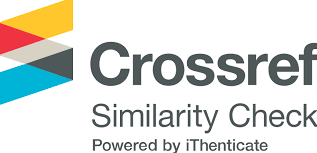Characterization of ecology and micropropagation of the Myrica esculenta Buch. - Ham. Ex D. don species in Lam Dong province
Keywords:
Myrica esculenta in vitro, WPM medium, Myrica esculenta Lam Dong, Myrica esculenta’s ecologyAbstract
Myrica esculenta, a medicinal plant belonging to the group of Actinorhizal
plants with different uses, is proved to be useful in farming on nitrogen-depleted soils. The study of the distributive, silvicultural and ecological characteristics, and micropropagation methods will be the basis for building a model
of growing Thanh mai tree under the canopy of Pine forests in Lam Dong
province. The M. esculentain Lam Dong has different distribution areas and
patterns; These small fruit species, grown in Don Duong, Duc Trong, Lam Ha,
Dam Rong, Da Lat and a part of Di Linh district, pertain to composition of
species that are significant to the forest floor, this is a light-loving and drought
tolerant plant, with low humus soils, low pH (< 5.5). By contrast, the large
fruit species distributed mainly in Bidoup - Nui Ba National Park, pattern
were scattered throughout the area, most of the individuals in small clusters
(2-3 individuals) were shade tolerant plants, growing along streams, with high
humus soils, pH average (6-7). In Micropropagation of Myrica esculenta, the
mature nuts of M. esculentawere used as primary explants for establishing
shoot cultures. The growth of M. esculentashoot cultures was compared on
media differing in nutrient formulation, Murashige and Skoog (MS) medium
and Woody plant medium (WPM), concentrations of 6- benzyladenine (BA)
(0.5-1.5 mg/l), α-naphthaleneaceticd (NAA) and indole-3-butyric acid (IBA)
concentration (0.5-1.5 mg/l). During the 9 weeks culture passage there was no
significant difference among two media, the WPM medium and MS medium.
However, the stem and leaf segments of the sample M. esculentain WPM medium were larger, straighter and stronger than those of MS medium. The best
BA concentration for M. esculentaexplants was 0.5 mg/l BA. The optimal
NAA concentration in the induction medium for rooting of microcuttings was
0.5 mg/l NAA applied for 7 weeks in root media. The acclimatization of rooted microcuttings was difficult because the tendency to dessicate of plantlets
and because of the occurrence of diseases due to high humidity in the greenhouse. Nevertheless, 70-75% of the M. esculentaplantlets were successfully
established in the greenhouse and the results also indicated that the mixed
medium between 50% coir soil + 50% Perlite was better growth than the other
treatments
References
1. Adsul, A. A., Chavan, J. J., Gaikwad, N. B., Gurav, R. V., Dixit, G. B., & Yadav, S. R., 2019. In vitro regeneration approaches for restoration of Ceropegia mohanramii—an endemic and critically endangered asclepiad. Journal of Genetic Engineering and Biotechnology, 17(1), 1-5.
2. Bhatt I.D., Dhar U., 2004. Factors controlling micropropagation of Myrica esculenta buch.-Ham. Ex D.Don: A high value wild edible of Kumaun Himalaya. Afr. J. Biotechnol. 3(10): 534-554.
3. Daniel Marmillod, 1982. Methodology and results of studies on the composition and structure of a terrace forestin Amazonia
4. Gangwar K.K., Deepali, Gangwar R.S., 2010. Ethnomedicinal plant diversity in Kumaun Himalaya of Uttarakhand, India Nat Sci (8): 66-78
5. Jeeva S., Lyndem F.B., Sawian J.T., Laloo R.C., Mishra B.P., 2011. Myrica esculenta Buch.-Ham. ex D. Don.- a potential ethnomedicinal species in a subtropical forest of Meghalaya, northeast India. Asian Pac J Trop Biomed (1): 174-177.
6. Kala C.P., 2007. Prioritization of cultivated and wild edibles by local people in the Uttaranchal hills of Indian Himalaya. Indian J Tradit Know (6): 239-243.
7. Kayang H., 2007. Tribal Knowledge on wild edible plants of Meghalaya, Northeast India. Indian J Tradit Know (6):177-181.
8. Lloyd, G., McCown, B., 1981. Commercially feasible micropropagation of mountain laurel, Kalmia latifolia, by the use of shoot tip culture. Proc. Plant Prop. Soc. 30, 421-427.
9. Maikhuri R.K., Semwal R.L., Singh A., Nautiyal M.C., 1994. Wild fruits as a contribution to sustainable rural development: A case study from the Garhwal Himalaya. Int J Sustain Dev World Ecol (1): 56-68.
10. Mathur, G., & Nadgauda, R., 1999. In vitro plantlet regeneration from mature zygotic embryos of Pinus wallichiana AB Jacks. Plant Cell Reports, 19(1), 74-80.
11. Monteuuis, O., & Bon, M. C., 2000. Influence of auxins and darkness on in vitrorooting of micropropagated shoots from mature and juvenile Acacia mangium. Plant cell, tissue and organ culture, 63(3), 173-177.
12. Murashige, T., Skoog, F., 1962. A revised medium for rapid growth and bioassays with tobacco tissues cultures. Physiol. Plant. 15, 473-497
13. Nandwani D., 1994. Clonal propagation of M. esculenta(Box- berry) A fruit bearing tree of north-east India. Gartenbauwissenchaft (Horticultural Science) 59(6): 264-267.
14. Naik, S. K., & Chand, P. K., 1998. In Vitro Clonal Propagation of an Elite Cultivar of Pomegranate (Punica granatum L. cv. Ganesh) Using Nodal Explants from Mature Tree. in vitrocellular and developmental biology animal, 34, P-1137.
15. Negussie, A., 1997. In vitro induction of multiple buds in tissue culture of Juniperus excelsa. Forest Ecology and Management, 98(2), 115-123.
16. Pandey G., Sharma B.D., Hore D.K., Rao N.K., 1993. Indigenous minor fruits’ genetic resources and their marketing status in north-eastern hills of India. Journal of Hill Research 6:1-4.
17. Panthari P., Kharkwal H., Kharkwal H., Joshi D.D., 2012. Myrica nagi: A review on active constituents, Biological and therapeutic effects. Int J Pharm Pharm Sci (4): 38-42.
18. Pierik, R. L. M., 1987. * In vitro culture of higher plants as a tool in the propagation of horticultural crops. In International Symposium on Propagation of Ornamental Plants 226 (pp. 25-40).
19. Rahman, M. A., & Blake, J., 1988. Factors affecting in vitro proliferation and rooting of shoots of jackfruit (Artocarpus heterophyllus Lam.). Plant Cell, Tissue and Organ Culture, 13(3), 179-187.
20. Rathore, J. S., Rathore, V., Shekhawat, N. S., Singh, R. P., Liler, G., Phulwaria, M., & Dagla, H. R., 2004. Micropropagation of woody plants. In Plant biotechnology and molecular markers (pp. 195-205). Springer, Dordrecht.
21. Seal T., 2011. Nutritional composition of wild edible fruits in Meghalaya state of India and their ethnobotanical Importance. Res J Bot (6):58-67.
22. Singh J., Lan V.K., Trivedi V.P., 1986. Pharmacognostic evaluation of Katphala (The bark of Myrica esculentaBuch-Ham). Anc Sci Life (6): 85-7.
23. Singh N., Khatoon S., Srivastava N., Rawat A., Mehrotra S., 2009. Qualitative and quantitative standardization of Myrica esculentaBuch.-Ham. Stem bark by use of HPTLC. J Plana Chromat (22): 287-91.
24. Sundriyal M., Sundriyal R.C., 2001. Wild edible plants of the Sikkim Himalaya: nutritive value of selected species. Economic Botany. 55 (3): 377- 390.
25. Sum N.T., Tuan P.N, Ket N.V, 2007. Ứng dụng phương pháp vi nhân giống trong bảo tồn giống Thông nước Glyptostrobus Pensilis (Staunton ex D. Don) K. Koch. Tạp chí Khoa học kỹ thuật Nông Lâm nghiệp, Đại học Nông Lâm TP. HồChí Minh, 1+2: 75-81
26. Thành N. D, Lụa D.T.M, Liên Q. T, 2012. Tạo cây Thông nước - Glyptostrobus pensilis(Staunton ex D. Don) K. Koch hoàn chỉnh từ chồi nhân in vitro. Tạp chí Sinh học, 2012, 34(2): 228-234
27. Tuan, P. N., Meier-Dinkel, A., Höltken, A. M., Wenzlitschke, I., & Winkelmann, T., 2017. Factors affecting shoot multiplication and rooting of walnut (Juglans regiaL.) in vitro. Acta Horticulturae, (1155), 525-530.
28. Tuan, P. N., Meier-Dinkel, A., Höltken, A. M., Wenzlitschke, I., & Winkelmann, T., 2016. Paving the way for large-scale micropropagation of Juglans× intermedia using genetically identified hybrid seed. Plant Cell, Tissue and Organ Culture (PCTOC), 126(1), 153-166.
29. Vinh T., 2011. Nghiên cứu một số đặc điểm sinh học, sinh thái và nhân giống làm cơ sở bảo tồn loài Thuỷtùng (Glyptostrobus pensilis(Staunt.) tại Việt Nam. Luận án Tiến sỹ khoa học Nông nghiệp. Trường Đại học Lâm nghiệp.
30. Yanthan M., Misra A.K., 2013. Molecular approach to the classification of medicinally important actinorhizal genus Myrica. Indian J Biotechnol 12:133-136.
31. Yadav, U., Lal, M., & Jaiswal, V. S., 1990. Micropropagation of Morus nigra L. from shoot tip and nodal explants of mature trees. Scientia Horticulturae, 44(1-2), 61-67.








